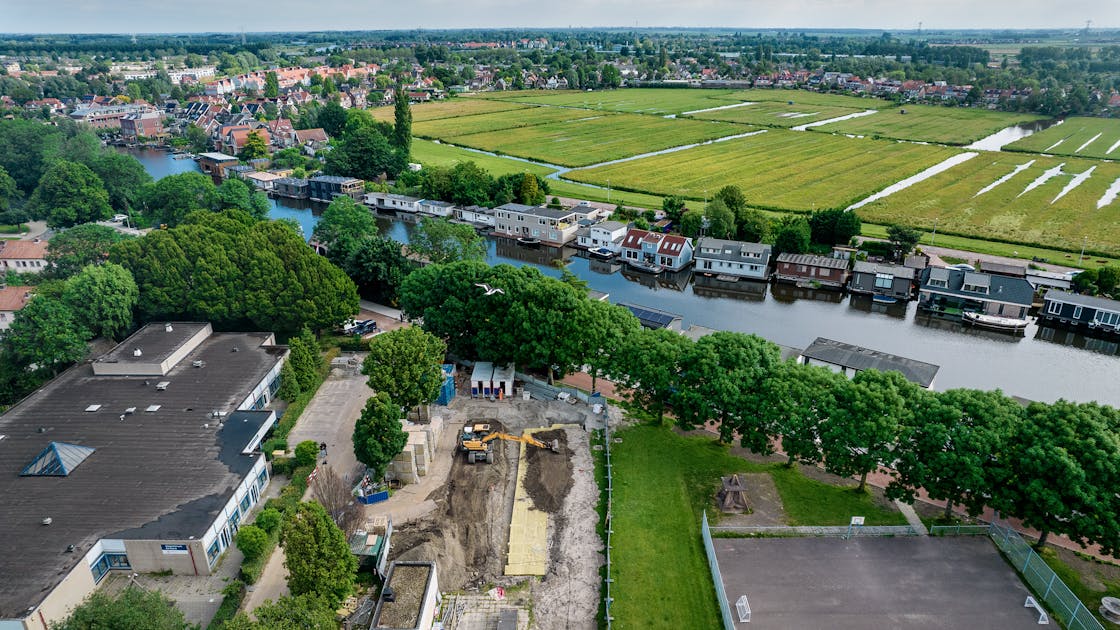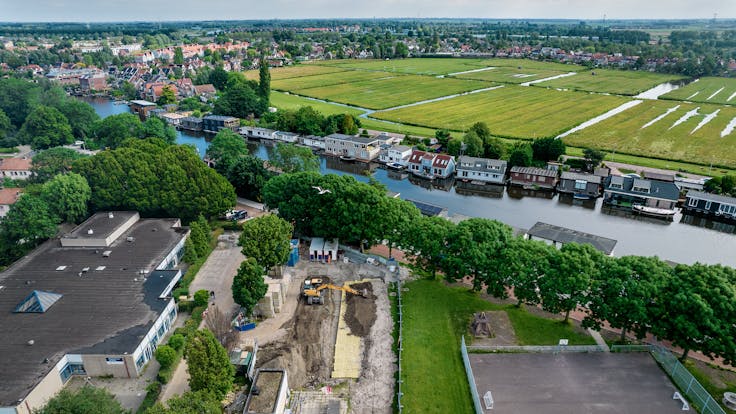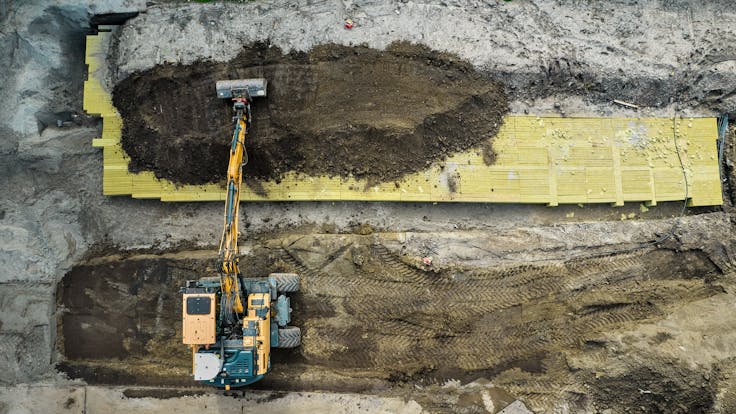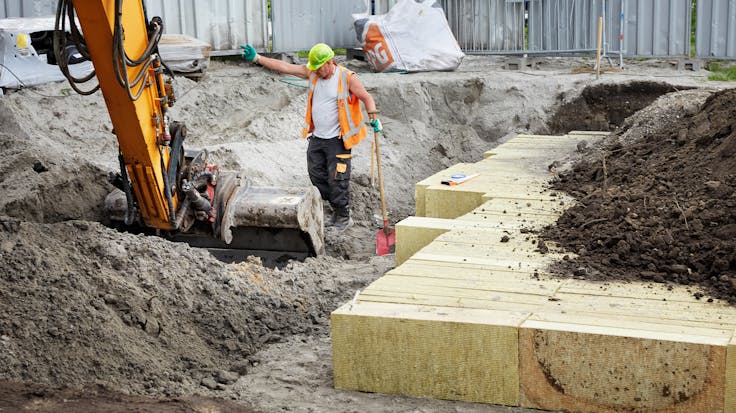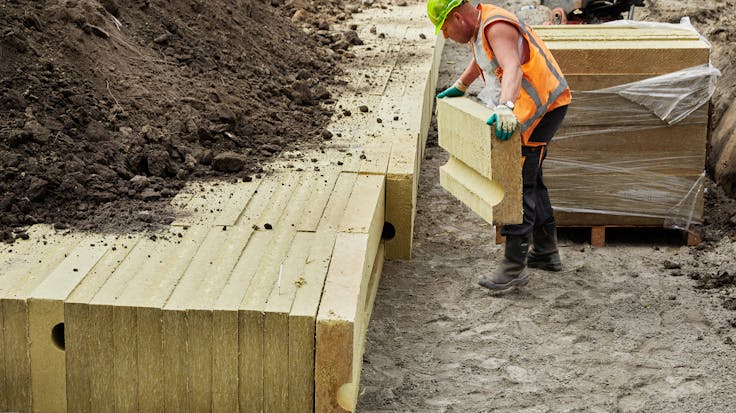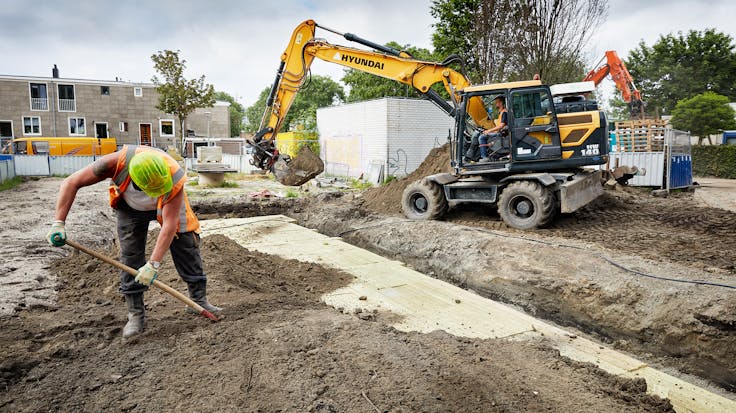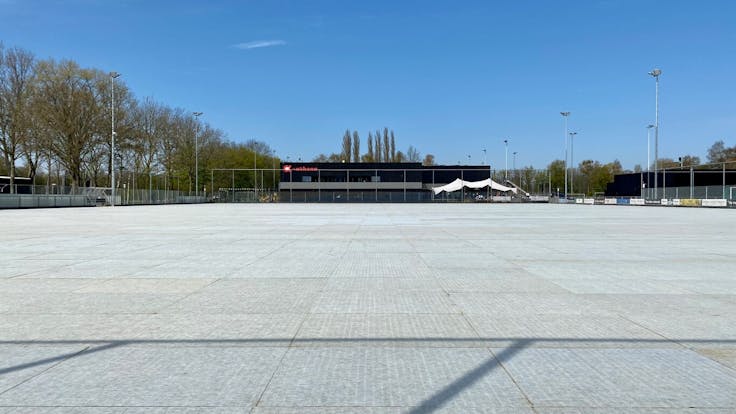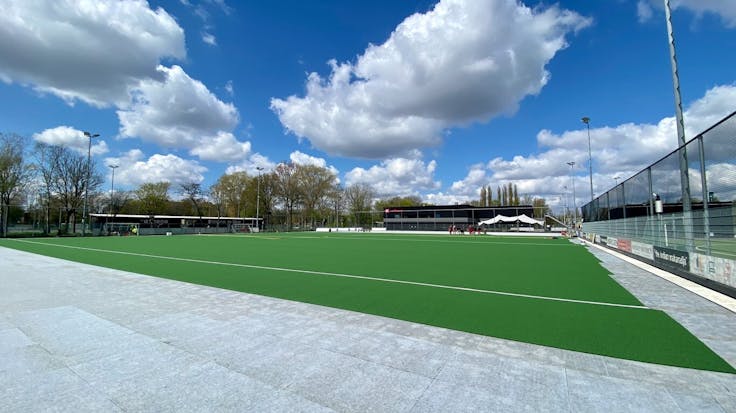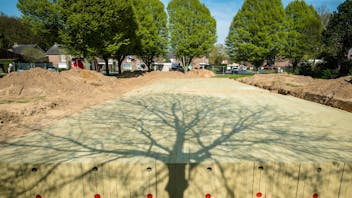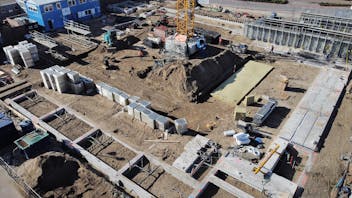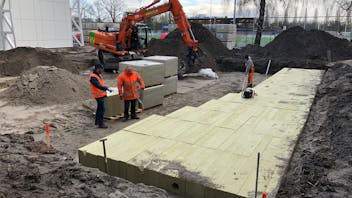Rockflow in Tuindorp-Oostzaan
Between the beginning and the end of May 2021, trucks carrying Rockflow stone wool elements drove into Tuindorp-Oostzaan almost daily according to a tight time schedule. Intended for the water buffers that were planned at various locations in the context of climate resistance. To cause as little inconvenience as possible in the narrow streets, each time a limited trajectory was completed. This required precise logistics and well-coordinated cooperation between all parties. Daan Los, technical advisor at Rockflow, says about the project: "In the context of Rainproof Amsterdam, contractor KWS asked Wareco to advise them on finding a system to collect and store the prescribed capacity of water. The firm was already familiar with Rockflow through previous projects. Together with the consultancy firm, we informed the contractor extensively about its operation and functionality. It helped that Rockflow is now a proven system with sufficient documentation and answers to all questions. The circular character of the basic material stone wool contributes to sustainability, which was also an important factor in the climate-proof redesign of the neighbourhood. Also, in some places you have to deal with a high groundwater level, so there is little installation space. Rockflow can be used there because it is stronger and can handle the same traffic load with less coverage. This allows us to install more volume under the cover layer and above the groundwater level."
Convincing arguments
Daan Los: "At first glance, Rockflow elements seem quite massive. We therefore often demonstrate how quickly and how much water such an element absorbs. That is surprising to many people and changes their perspective. It's a convincing story if you then also point out how much more traffic load the system can take compared to other systems and how flexible you are in design and implementation. Also, the ease with which the elements can be installed without need to use geotextiles or to interconnect the elements. They are just placed next to each other. If you encounter an obstacle - tree roots or unforeseen cables, for example - you simply saw the elements on the spot. Volume that you remove in one place you simply add in another so that the calculated volume is maintained."
The exact performance will be closely tracked over the next five years. Torben Tijms: "We will survey the systems with extensive measuring equipment and simulate showers with full-scale tests, adapting the construction of a shower every five minutes. All measures and systems are examined and a lot of data is collected. Information that can improve the operation of a system is also shared with the cooperation partner. Ultimately it is published on the Waternet Winnovatie website. Other municipalities then also benefit from this, because yes, we have to do it together."
